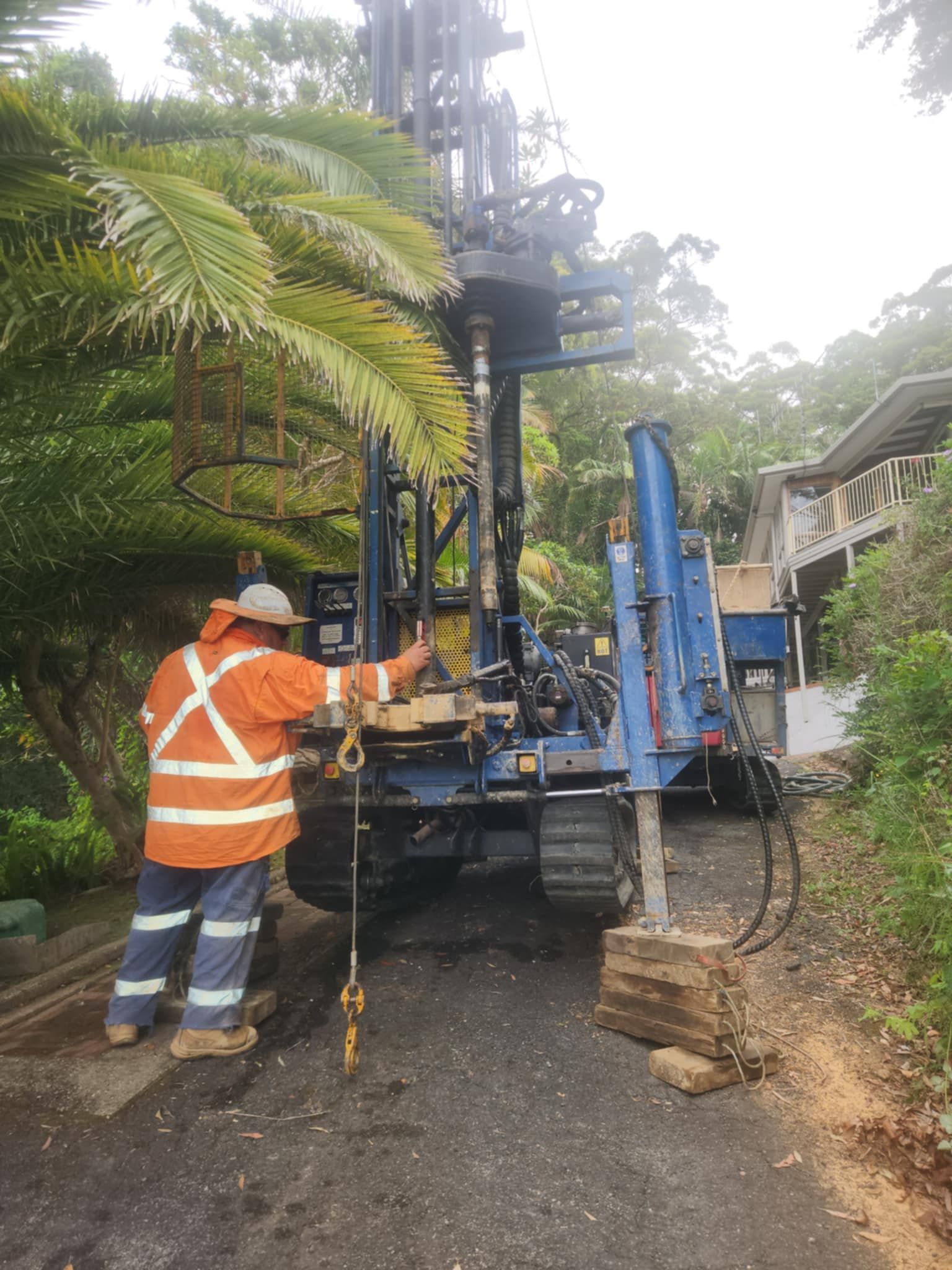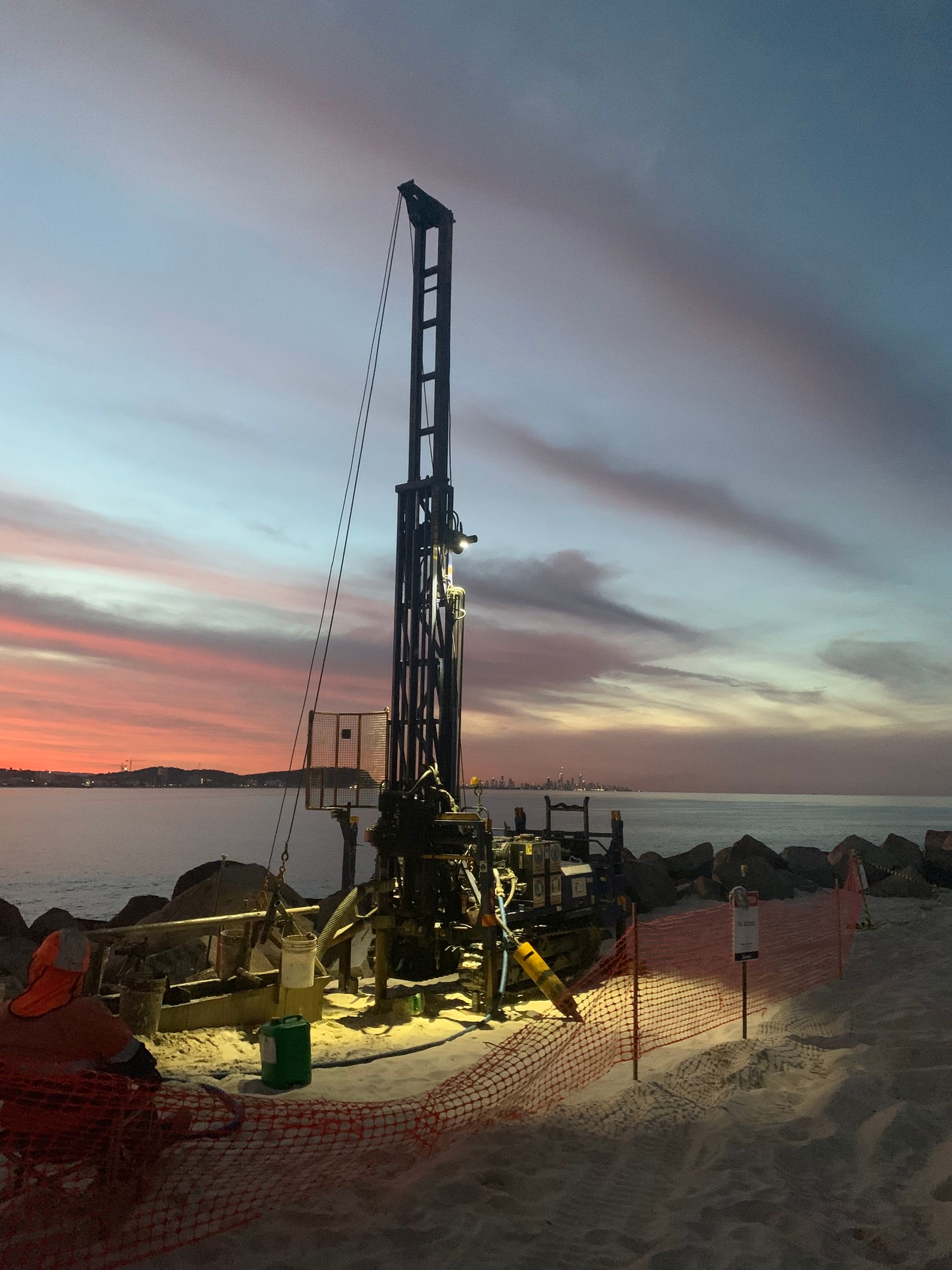Piezometers in
Australia
- Over 32 years of reliable, industry-backed drilling experience
- Full-service capabilities with 7 specialised drilling rigs
- Serving Australia with safe, efficient on-site delivery
Talk to the Team
Thank you for contacting North Coast Drilling & Wicks.
We will be in touch soon.
Oops, there was an error sending your message.
Please try again later.
Australia-Wide Piezometers
Keeping track of groundwater movement is essential on many construction and environmental sites. That’s why North Coast Drilling & Wicks provides accurate piezometer installation across Australia, helping clients monitor subsurface water pressure over time.
Our installations are used to assess groundwater conditions, check for changes during construction, and support long-term site safety and compliance. We install both standpipe and vibrating wire piezometers, with placement depths and casing tailored to your site’s requirements. These systems are often installed alongside our geotechnical drilling, inclinometer installations, and ground improvement works to give a complete picture of what’s happening underground.
With 32+ years of drilling experience and seven rigs ready to go, we deliver piezometer installations that are fast, accurate, and site-specific. For expert advice or to schedule your installation, call
0401 380 986 today.
Groundwater Monitoring Made Easy
Piezometers are a trusted tool for monitoring pore water pressure in soil and rock, helping engineers make informed decisions and reduce the risk of structural failure. Whether you're working on an embankment, landfill, or civil project, we install monitoring wells with precision and care.
Our team works closely with your engineers to determine ideal locations and depths, ensuring dependable readings from day one.
- Standpipe and vibrating wire piezometers available
- Installed to site-specific depths and casing requirements
- Supports environmental, mining, and infrastructure projects
Reliable groundwater data is essential for long-term planning and risk management.
Contact us today to learn more about piezometer installations or to arrange a quote for your project.
Frequently Asked Questions
What is a piezometer, and why is it installed?
A piezometer is an instrument used to measure pore water pressure within soil or rock. It helps engineers monitor groundwater levels and assess the stability of slopes, embankments and retaining walls. Piezometers are crucial in geotechnical projects because changes in pore water pressure can affect soil strength and lead to settlement, slope failure or liquefaction. By providing real-time data, piezometers support safe construction and maintenance of infrastructure such as dams, tunnels and excavations. They are typically installed in boreholes and can be either standpipe piezometers, vibrating wire piezometers or pneumatic types, depending on the required precision and site conditions.
How is a piezometer installed?
Piezometer installation involves drilling a borehole to the required depth, typically using an auger or rotary rig. The piezometer is then lowered into the borehole, ensuring it is positioned at the correct monitoring depth. Filter sand is placed around the sensor tip to allow groundwater to enter freely, followed by a bentonite seal above the sand to isolate the measuring zone. The rest of the borehole is backfilled with bentonite or grout to prevent cross-contamination between layers. Accurate installation is critical for reliable readings, so depth and alignment are carefully checked during placement, and protective casings are added at ground level.
What are the main types of piezometers?
Piezometers come in several types, each suited to specific monitoring needs. Standpipe piezometers are simple and cost-effective, using a perforated pipe to measure water levels manually. Vibrating wire piezometers offer precise, real-time data and are ideal for automated monitoring in complex projects. Pneumatic piezometers use air pressure to determine pore water pressure and are preferred in situations with rapid water level changes. Fibre optic piezometers, though less common, provide high-resolution data over long distances. The choice depends on factors such as required accuracy, budget, site accessibility and the complexity of the groundwater conditions being monitored.
What makes North Coast Drilling & Wicks a good choice for Australia-wide drilling projects?
With over 32 years of experience and one of the most versatile fleets in the industry, we offer nationwide reach backed by proven results. Our ability to adapt to diverse ground conditions, provide a full range of drilling services, and deliver projects on time makes us a trusted partner Australia-wide.






